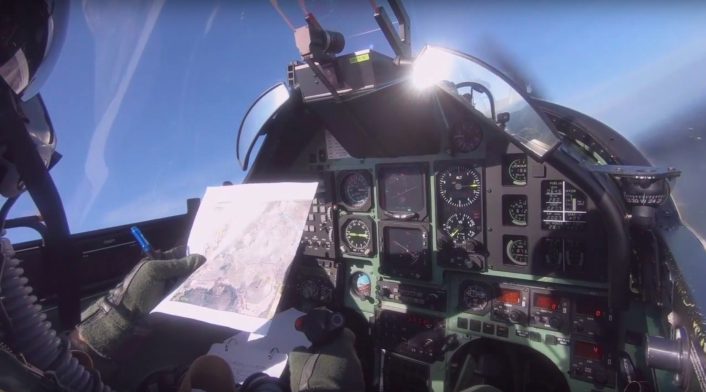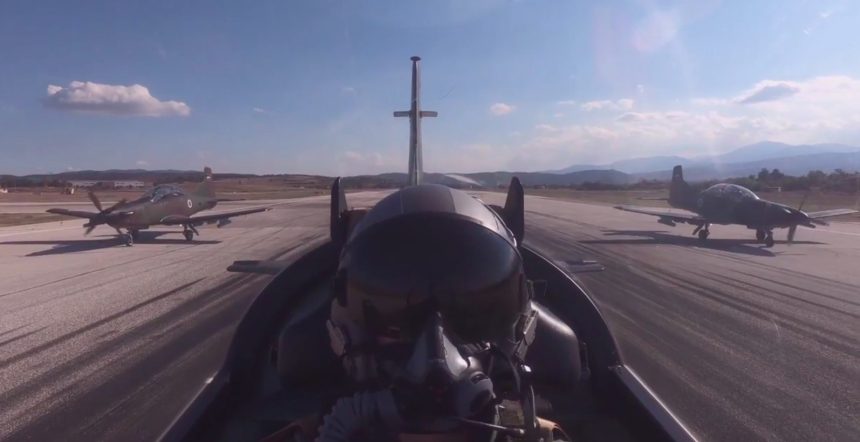Interesting video shows PC-9M advanced training and close air support turboprops at work. Something you don’t see every day.
The Slovenian Air Force Pilatus PC-9M Swift, also called Hudournik in Slovenia, is a single engine tandem-seat turboprop Light Attack Aircraft.
Stationed in Cerklje ob Krki Airbase, about 80 km to the east of Ljubljana and belonging to the 152. Letalska eskadrilja (152. LEESK, 152nd Fixed-wing Squadron) they are primarily used for Close Air Support (CAS) missions, protection of convoys, SMI (Slow Movers Intercept) and armed reconnaissance.
The aircraft is able to carry more than 1000 kg of ammo including Mk82, AIM-9L missiles, gun pods, 2.75 inch unguided rockets in various combinations.
The short but interesting video below shows some of the operations on the PC-9M, including air-to-air training, low-level flying, formation flying, and live firing at the range.
Interestingly, the Beechcraft AT-6 attack plane, one of the two remaining competitors in the U.S. Air Force Light Attack Experiment, is a derivative of the PC-9.
Indeed, small, inexpensive, easy to operate turboprops, developed as trainers and turned into combat aircraft (just like the PC-9M) are becoming a big defense trend. Capable of employing precision weapons and ensuring long loiter times, these platforms are the backbone of low-cost counterinsurgency or “COIN” air forces that can operate their versatile aircraft from unimproved airfields, roadways or even fields.
The post 9/11 battlefield has changed significantly during the Global War on Terror. It includes a wide spectrum of conflict models for air combat. These include large scale air operations against nation states with conventional air forces flying against heavily defended ground targets in a non-permissive environment, like Desert Storm. At the other end of the spectrum it includes anti-insurgent air operations in a smaller, more permissive battlespace that does not require stealth, long range aircraft or heavy weapons, like some operations in Syria, Iraq and Afghanistan. That’s why even the world’s most powerful air arm is in the process of selecting a Light Attack aircraft (either the AT-6 or the Sierra Nevada/Embraer A-29B Super Tucano).
Here’s what U.S. Air Force subject matter expert on light attack and counterinsurgency Col. Mike Pietrucha told us specifically about the Light Attack Experiment and the promise it may offer the Air Force:
“The argument is to go for a less expensive aircraft that is more optimized for the kind of warfighting we’ve been doing so that you can spread the burden out, rather than make everything a one size fits all airplane. Bottom line of that right now, is we have more missions than we have Air Force. When you look at light attack the amount of fuel it takes to keep a turboprop in the air for an hour is the amount of fuel it takes to taxi the Strike Eagle down the runway for six to nine minutes. Just the logistics start to look like an awfully attractive argument.”

H/T Matic Gomboc for the heads-up!









